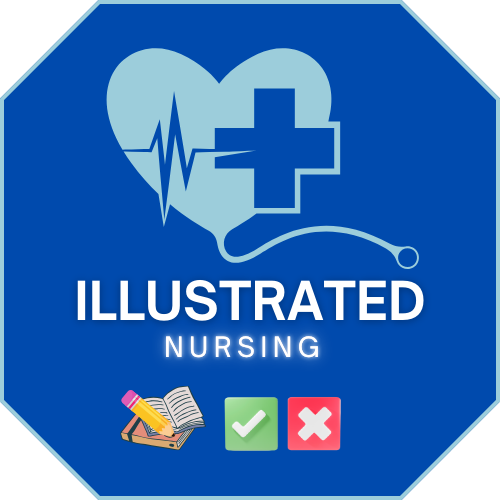Thyroid Disorders NCLEX-like Critical Thinking Questions
Quiz Summary
0 of 13 Questions completed
Questions:
Information
You have already completed the quiz before. Hence you can not start it again.
Quiz is loading…
You must sign in or sign up to start the quiz.
You must first complete the following:
Results
Results
0 of 13 Questions answered correctly
Time has elapsed
You have reached 0 of 0 point(s), (0)
Earned Point(s): 0 of 0, (0)
0 Essay(s) Pending (Possible Point(s): 0)
| Average score |
|
| Your score |
|
Categories
- Easy 0%
- Hard 0%
- Medium 0%
- 1
- 2
- 3
- 4
- 5
- 6
- 7
- 8
- 9
- 10
- 11
- 12
- 13
- Current
- Review / Skip
- Answered
- Correct
- Incorrect
-
Question 1 of 13
1. Question
The critical care nurse is caring for a client with a history of hypothyroidism who is now experiencing a myxedema coma. The nurse understands that this condition is often precipitated by which of the following? Select all that apply.
CorrectIncorrect -
Question 2 of 13
2. Question
The nurse anticipates which of the following signs and symptoms in a client with myxedema coma? Select all that apply
CorrectIncorrect -
Question 3 of 13
3. Question
The nurse anticipates which of the following orders for a client with a myxedema coma? Select all that apply.
CorrectIncorrect -
Question 4 of 13
4. Question
The client is a 45-year-old female with a history of hyperthyroidism who had a partial parathyroidectomy 12 hours ago due to hyperparathyroidism secondary to chronic kidney disease.
Vital Signs:
- BP 190/70
- HR 135
- RR 25
- Temperature 101.9 ° F
Nursing assessment: Irritable, agitated, confused with unintentional tremors. Skin very warm and moist.
Which of the following is the the priority nursing action?
CorrectIncorrect -
Question 5 of 13
5. Question
The nurse is caring for a client with hyperthyroidism who is taking propylthiouracil (PTU). Which of the following side effects should the nurse monitor for?
CorrectIncorrect -
Question 6 of 13
6. Question
The client is a 45-year-old male who had a thyroidectomy 6 hours ago. The nurse hears a laryngeal stridor. Which of the following is the priority nursing action?
CorrectIncorrect -
Question 7 of 13
7. Question
The client comes to the clinic and tells the nurse “I think I have hyperthyroidism.” The nurse would appropriately inquire whether the client has which of the following signs and symptoms? Select all that apply.
CorrectIncorrect -
Question 8 of 13
8. Question
The client is diagnosed with hyperthyroidism. The nurse anticipates which of the following nursing interventions? Select all that apply.
CorrectIncorrect -
Question 9 of 13
9. Question
A client admitted with hyperthyroidism is anxious and nervous about hospitalization. Which of the following is the most therapeutic approach by the nurse?
CorrectIncorrect -
Question 10 of 13
10. Question
The nurse is caring for a client who had a thyroidectomy. The nurse suspects that the parathyroid glands were probably damaged during the surgery and plans on checking for signs and symptoms of hypocalcemia. How should the nurse assess for hypocalcemia?
CorrectIncorrect -
Question 11 of 13
11. Question
The clinic nurse is assessing a client who complains of low energy, depression, decreased sexual desire, weight gain of 20 pounds over the last few months, feeling cold all the time, constipation and changes in menstruation.
Vital signs: Blood pressure 110/55, HR 55, RR 18, and Temperature 97.9 °F
Assessment: Oriented x 4 but appears apathetic. S 1 S2 with no murmurs, mild swelling to lower extremities and puffy face. Lungs clear to auscultation. Dry hair and brittle nails.
Specify by typing an “X” whether the following assessment findings are either concerning or not concerning.
-
Finding Concerning Not concerning Orientation Apathy Cold Intolerance Heart Tones Sexual Desire Hair and Nails Level of Energy Current Temperature Menstruation Cardiovascular findings Respiratory Assessment
CorrectIncorrect -
-
Question 12 of 13
12. Question
The nurse is developing a teaching plan for a client who had a thyroidectomy. Which of the following points should the nurse include in the teaching plan?
CorrectIncorrect -
Question 13 of 13
13. Question
The nurse educates a client with a thyroid disorder about the differences between hypothyroidism and hyperthyroidism. Which statement by the client demonstrates correct understanding?
CorrectIncorrect
